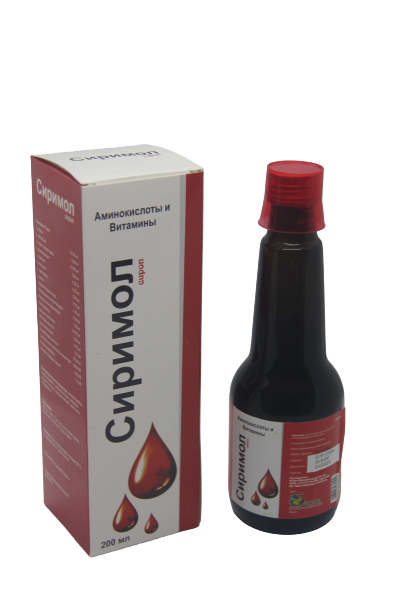Seremol Syrup
Dosage form: syrup in a bottle of 200 ml.
Description: thick, brown-yellow syrup with a characteristic aromatic odor
Pharmacotherapeutic group: means for the correction of metabolic processes
Composition:
L-leucine, L-isoleucine, L-lysine hydrochloride, L-phenylalanine, L-threonine, L-methionine, L-tryptophan, L-valine, thiamine hydrochloride, sodium riboflavin phosphate, pyridoxine hydrochloride, nicotinamide, calcium pantothenate, folic acid, cyanocobalamin, ascorbic acid, synthetic retinol concentrate, cholecalciferol, alpha tocopherol acetate.
Pharmacological properties:
Amino acids are a source of energy and also contribute to the restoration of bones, skin, muscles. B vitamins, at low concentrations, have biological activity and have a regulatory effect on cell function. As part of enzyme systems, they take part in the regulation of the metabolism of carbohydrates, proteins and lipids. Nicotinic acid and its amide are included in the composition of codihydrase, which is involved in the transport of hydrogen and redox processes necessary for tissue respiration.
Indications for use:
Seremol Syrup is intended for the treatment of vitamin and amino acid deficiencies in the body.
For severe infections during rehabilitation
In the complex treatment of deficiency anemias
For chronic diseases of the gastrointestinal tract
With endocrine disorders
For surgical interventions
With injuries, burns during the rehabilitation period
With beriberi syndrome, with pellagra.
Method of administration and dosage:
Children from 2 to 11 years old: 5 ml 3 times a day by mouth.
Adults: 15 ml, 2 times a day by mouth.


Seremol Capsules
Dosage form: capsules No. 30 in blisters
Indications for use: Conditions when dietary intake of vitamins and minerals is not optimal, for example, in the presence of organic diseases such as malignant neoplasms and immune deficiency syndrome such as AIDS.
Conditions where absorption of vitamins and minerals is not optimal, such as malabsorption due to inflammatory bowel disease or fistula formation, short bowel syndrome, and Crohn’s disease.
Convalescence period, for example, if anorexia or cachexia occurs while receiving chemotherapy or radiotherapy.
The recovery period after surgery, for example, when the patient is unable to feed independently.
For patients on a special or restricted diet, such as a renal diet, or when several food groups are limited for therapeutic purposes for weight loss.
Method of administration and dosage:
Adults and the elderly – one capsule a day, preferably one hour after meals. Do not exceed the recommended dose. Swallow whole with water.
Children under 12 years of age – not recommended for use in this group of patients.
